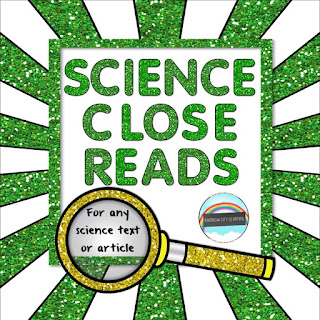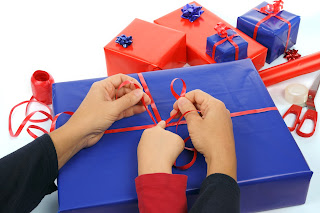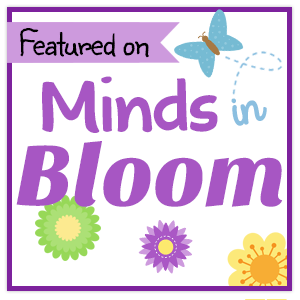Getting together with some friends to offer a #bestof2016sale for a couple of days, so I decided to look at which resources were the top sellers at Rainbow City Learning in 2016. I hope you'll click on some of the covers below to try in 2017! Some of them may even be on sale!
Take a look at what other teachers are saying about each of these classroom tested and kid-approved resources, all designed to make your teaching day easier, more relevant and fun, on right on target for meeting the standards!
All you need to get your class or school maker space started and to keep it in use throughout the year! Rated by teachers as "simply genius", "all you need", and "gorgeous resource with fantastic lessons"! This was the first ever Maker Space kit on TpT and is still the best way to roll out the maker movement for elementary students!
Dreaming of a new way to add some fun and whimsy to your classroom Maker Space or to your elementary science classroom? Storybook STEAM invites students to think about their favorite classic storybook tales in a new and stimulating way.
One teacher says this is an "incredible resource... All the planning has been done, all I need to do is to plan the time out. I am so excited to use this for Friday STEM activities. Now, I don't have to work as hard to get things together."
Another adds: "As always, Rainbow City Learning has hit it out of the park! I cannot get enough of these activities and neither can my students!"
Best of all: This bundle is still growing, so a purchase today ensures more storybook activities to come!
Gratitude SCOOT provides a fun and motivating way for your students to reflect on all they have to be grateful for. It’s a great activity as we enter the Thanksgiving and winter holiday season, and great for encouraging an attitude of gratitude at any time of year.
Teachers report that kids really enjoy this SCOOT game, and that it's perfect for a focus on gratitude any time of the year!
This resource provides some basic ideas for getting started on a Maker Space project. There are three levels of task cards here: The blue level is for your independent learners, the true geniuses of “genius hour”. In this level, students receive a task that names only the sector of society that might benefit from the project.
All else is open-ended. The green level defines a problem for the student or group to solve. The purple level provides a scaffold for those who need more direction and suggestions.Backs of cards are included here as well as grayscale versions of all the cards. Three pages of blank cards are also included in case you want to add some tasks of your own!
Teachers say these are great for early finishers or to get a maker space off to a great start!
Help your classroom community to handle stress, breathe easier, and work at the same time! Posters for poses, breath, and motivation!
From a satisfied teacher: "Just what I was looking for! Complete, thorough, and relevant to the needs of my students. Also, the pictures on each page were exactly what the kids needed to understand the task. Excellent!"
This resource for Close Reading in Math was the first ever on TpT. I developed it specifically to help a struggling student deal with the standardized math tests and the longer story problems found there. Close reading in math helps all of our students to make sense of the problem and develop a blueprint for their work.
The pages in this resource will work with any multi-paragraph word problems.
Teachers love the scaffolding of graphic organizers and the rubric. From a teacher who uses this resource: "FINALLY! Some close read skills and strategies for our math teachers to use with students! Thank you so much - great resource!!"
In addition to the great graphic organizers and rubric found in my other close read resources, this one includes a clear explanation of what narrative nonfiction is and how it differs from expository nonfiction, along with a suggested book list for upper elementary students of narrative nonfiction (also suitable for read-alouds).
Teachers have called this resource "awesome" and "great", and also note that it is just what is needed when approaching lessons on narrative nonfiction.
Close reading of science texts and articles will help students become more knowledgeable thinkers in science class.
The pages in this resource will work with any science text or science article in the news that your students need to read as part of their coursework. They may also become more confident test takers!
One teacher says: "Thanks for developing a way to read difficult science articles with my students. This works great with our science book for Sun, Moon and Stars."
Another says, "These will be a great way to introduce close reading in my science class this year. I appreciate the scaffolded reading notes as well...leads to independence. Thanks!"
Electricity SCOOT” is a fun and motivating way to review Science concepts about electric energy and circuits. The concepts covered in this SCOOT game are now part of the Next Generation Science Standards focusing on Energy for Grades 3 and 4. The responses can be used as a formative assessment, or just a review before the test.
A copy of the answer key also can serve as a study guide for the test!
Teachers agree that this a fun way to review electricity, and some choose to use it as is for their unit assessment!
Growth Mindset SCOOT provides a fun and motivating way for your students to reflect on the ways in which they react to new learning opportunities and challenges. It’s a great activity at the beginning of the year, as new units are introduced, or as a reflection at the end of the year. The questions on these cards are also perfect to use for brain break discussions, as writing prompts or prompts for a growth mindset journal.
Heather recently said, "My kids loved it and can't wait to do it again. The questions can also be used as discussion prompts or exit slips!"
Hope you've gotten a few ideas for getting 2017 off to great start in your classroom. Be sure to look for a few of these to be specially priced between now and Jan 1!
Happiest of new years, teachers!



































































